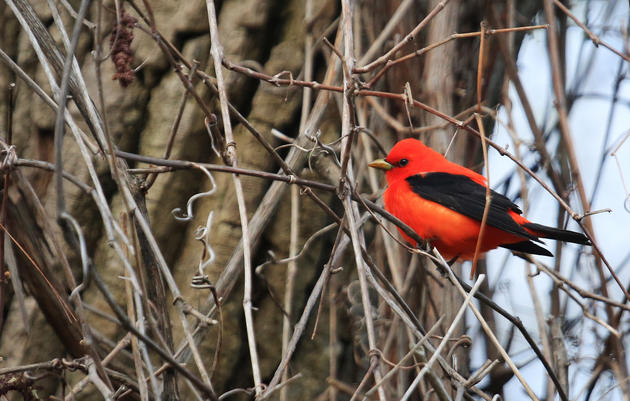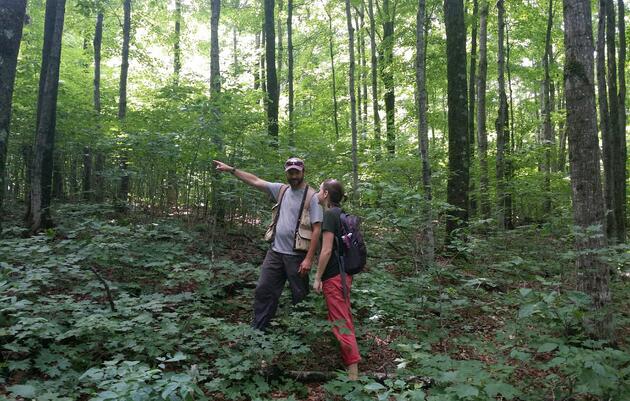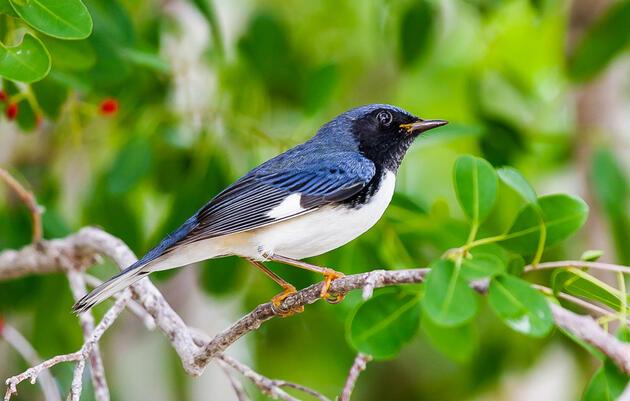In part one of our three-part series, we outlined the many benefits of Vermont’s forests to people and wildlife alike, especially in the face of climate change. These benefits are diverse and indispensable, rendering any management strategy that only addresses one of these values in isolation destined to fall short. Treating forests as tree plantations with a single purpose, whether to store carbon, harvest timber, or produce maple syrup, would miss an opportunity to preserve the broader contributions of forests. Similarly, setting all forests aside solely for untouchable wilderness would be neither tenable nor desirable. Most would balk at these proposals. Yet when we shift our questioning to real-world dilemmas, answers take on shades of gray. How much bird decline are we willing to accept to increase carbon storage in trees? How much wood do we really need to harvest to meet our needs? Most importantly, how do we balance the needs of Vermont’s rural, urban, and avian communities to preserve our values and make our forests work for all Vermonters, feathered or otherwise?
In part two, we begin to grapple with these questions, focusing on the current and future threats to Vermont’s forests that any effective management strategy must combat. By understanding the historical context of our forests and the social, economic, and environmental trends that pressure them today, we can develop a management plan that includes people in our vision for Vermont forestland and inspires them to protect it.
We start with a crucial, if obvious, fact: for forests to deliver any of their economic, social, cultural, ecological, and environmental benefits, they must remain forests. All forest management must prioritize this need. Though forest health, composition, age, and structure are critical, declines in Vermont forest cover and connectivity threaten to render these individual characteristics moot. Between 2007 and 2017, Vermont lost nearly 100,000 forest acres, more than two percent of its total. Of the forestland lost since 2012, almost half has been diverted to agriculture, while 37 percent has been developed for commercial or residential use.
Seventy-nine percent of Vermont’s forestland privately owned and much of that land is available for development. As development pressures continue to build in Vermont, the fate of our forests rests in the hands of the next generation of private forestland owners, to whom 1.5 million forest acres will soon be entrusted due to an aging landowner base (USDA Forest Service, Vermont Forests 2017). While many of these forest inheritors would prefer to extend their family legacies and continue to support their communities, the skyrocketing value of undeveloped land in Vermont, coupled with a loss of local sawmills and poor markets for low-grade wood, will lead to difficult decisions, with the future of Vermont forests hanging in the balance.
The importance of keeping forests as forests applies to climate mitigation and resilience, as well. Between 2012 and 2017, Vermont forests experienced a one percent decline in total carbon storage, with the main driver being the loss of forestland (USDA Forest Service, Vermont Forests 2017). According to the Vermont Department of Forest, Parks and Recreation’s Vermont Forest Carbon Inventory (2021), though Vermont’s forestlands continue to remove more carbon from the atmosphere than they emit, their conversion to other uses has reduced their overall carbon intake by more than 17 percent since 1990. A vibrant forest industry is therefore a fundamental piece of the conservation puzzle, as it empowers private landowners to resist development pressures and keep their lands forested. Indeed, all forest management that includes harvesting trees—known as active management—must balance the inherent trade-offs between carbon storage, carbon sequestration, bird and wildlife habitat, and timber value. When we view forests within their broader spatial and temporal contexts, however, we find that a mosaic of management strategies across the landscape can collectively deliver the many forest benefits we rely on, sparing us the need to choose just one. (More on this in part three.)
For birds that depend first and foremost on the existence of forests, active forest management need not represent a mere trade-off with other forest benefits; if done thoughtfully, it can restore the forest conditions that created and sustained avian diversity in the first place. Just like us, birds require diverse and complex characteristics of Vermont forests. Current and historical human activity, however, has put many of those characteristics in jeopardy. By the late 19th century, European colonists had cleared a vast majority of Vermont’s current forestland for timber or agriculture, resulting in precipitous wildlife declines. When the colonists abandoned their farms and moved west, forests slowly returned to the landscape—first in the form of grasses and shrubs known as early-successional vegetation, and then as middle-aged trees, called secondary growth. This intermediate successional stage is where most of Vermont’s forests remain today, missing the canopy gaps, complex understory, and dead and down woody material that characterize old-growth forests. As a result, though many bird species have bounced back during this period of forest regeneration, others remain threatened by the homogeneity of forest age and structure across the landscape. Species such as the American Woodcock, Golden-winged Warbler, and Ruffed Grouse depend on young forest habitat, which today comprises just three percent of Vermont forestland and continues to decline (USDA, Vermont Forests 2017). Accordingly, total bird abundance in Vermont forests dropped by nearly 15 percent between 1989 and 2013 (Vermont Center for Ecostudies, The Status of Vermont Forest Birds). Of the species that declined most significantly over that period, many, including the Veery and White-throated Sparrow, occupy young forest patches and undergrowth, suggesting that the simplification of forest structure across Vermont might be partly to blame. (To learn more about the diverse needs of birds with respect to forest structure, read this article by Audubon Vermont senior conservation biologist and forester, Steve Hagenbuch.)
This history of human transformation of the land, along with the present-day effects of development, invasive species, and climate change, means that forests can no longer independently develop the complexity they need to support Vermont’s full range of biodiversity. All hope is not lost, however. In the third and final article of this series, we will reveal what Audubon Vermont has been doing to lend forests a helping hand, preserving a future where people and wildlife alike can find refuge and sustenance among Vermont’s Hemlock, Pine, Oak, Maple and other forest types from Hardwick to Bennington, and White River Junction to Colchester.
We are grateful to policy intern Thomas Patti for his work on this series and acknowledge his significant contributions.











